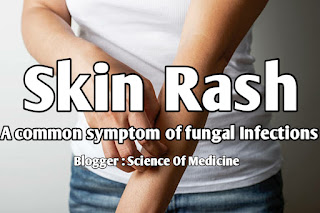Lungs Sounds PDF File
Scroll Down To Download in PDF 👇👇👇 src1+
Lung Sounds: An In-Depth Exploration of Respiratory Health
Introduction:
The human respiratory system is a complex network of organs that facilitates the exchange of gases, allowing our bodies to receive the oxygen necessary for survival. One key indicator of respiratory health lies in the sounds produced by the lungs. Lung sounds can vary depending on a person's overall health, and understanding them can provide valuable insights for medical professionals. In this article, we will delve into the world of lung sounds, exploring their types, causes, and the significance they hold in diagnosing respiratory conditions.
Types of Lung Sounds:
There are two main categories of lung sounds: normal and abnormal. Normal lung sounds are characterized as either vesicular or bronchial. Vesicular lung sounds occur when air passes through the small airways and reaches the alveoli, whereas bronchial sounds result from air passing through larger airways near the trachea.
On the other hand, abnormal lung sounds can be further categorized into adventitious and transmitted sounds. Adventitious lung sounds are additional sounds heard during the respiratory cycle and can indicate underlying issues. These can include wheezes, crackles, rhonchi, and pleural friction rubs. Transmitted lung sounds, on the other hand, are sounds heard from distant structures, such as the heart or the aorta.
Normal Lung Sounds:
Vesicular lung sounds are usually heard during inhalation and are softer and longer than bronchial sounds. They can be described as a gentle rustling or swishing noise and are considered normal when heard over most areas of the lungs. On the other hand, bronchial sounds are typically louder and are heard closer to the trachea.
Abnormal Lung Sounds:
Wheezes: Wheezing lung sounds are characterized by a high-pitched, musical sound that occurs during expiration. They are often associated with narrow airways due to conditions like asthma, bronchitis, or chronic obstructive pulmonary disease (COPD).
Crackles: These are intermittent, non-musical sounds often described as popping or crackling noises. They can be further classified into fine and coarse crackles. Fine crackles are high-pitched and typically indicate the presence of fluid in the alveoli or smaller airways, often associated with conditions like pneumonia or heart failure. In contrast, coarse crackles are lower in pitch and may imply the presence of secretions in larger airways.
Rhonchi: Rhonchi lung sounds are deep, low-pitched rumbling noises, often resembling snoring. They occur when air passes through airways obstructed by mucus or other secretions, as in conditions like chronic bronchitis or bronchiectasis.
Pleural Friction Rub: This lung sound occurs when inflamed pleural surfaces rub against each other during breathing. The sound resembles a creaking or rubbing noise and is often associated with conditions such as pleurisy or lung inflammation.
Significance of Lung Sounds:
Lung sounds play a crucial role in the diagnosis and monitoring of respiratory conditions. By listening to lung sounds with a stethoscope, healthcare providers can gather valuable information about the state of a patient's lungs. For example, crackles may indicate the presence of underlying lung diseases or infections, while wheezes can suggest bronchospasms or narrowed airways. By carefully analyzing lung sounds, healthcare professionals can guide treatment decisions and monitor the progression of respiratory conditions.
Conclusion:
Lung sounds are an essential tool for healthcare providers in diagnosing and managing respiratory conditions. Understanding the different types of lung sounds, both normal and abnormal, gives medical professionals valuable insights into a patient's respiratory health. By listening attentively to these sounds and recognizing deviations from the norm, healthcare providers can ensure timely intervention and appropriate treatment strategies. Regular monitoring and follow-up through the examination of lung sounds greatly contribute to maintaining optimal respiratory health for all individuals.

.jpeg)






